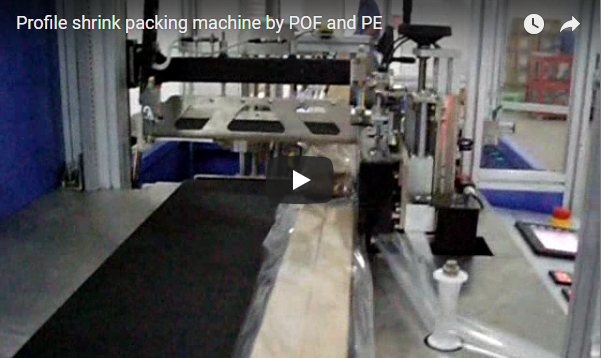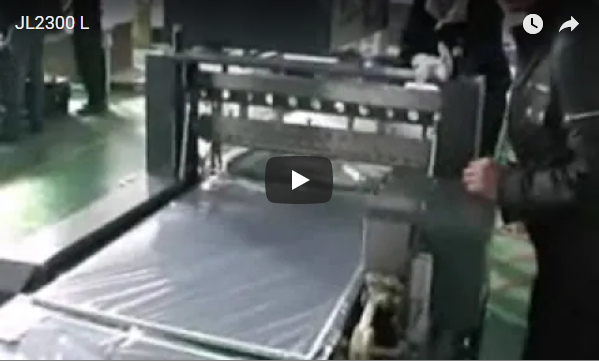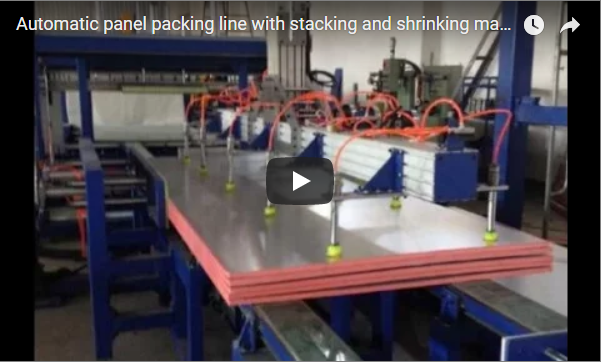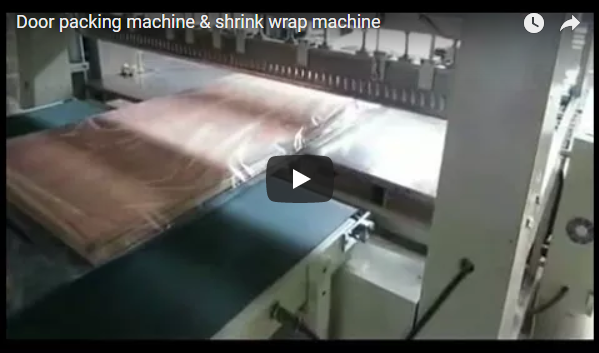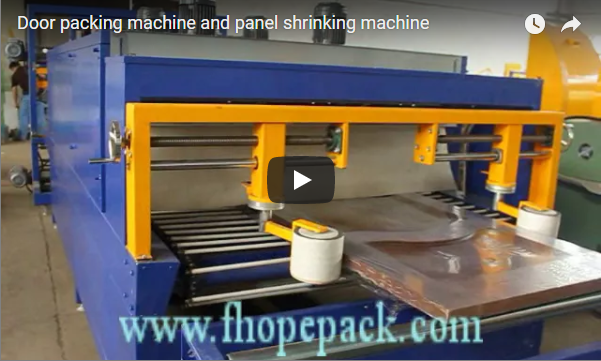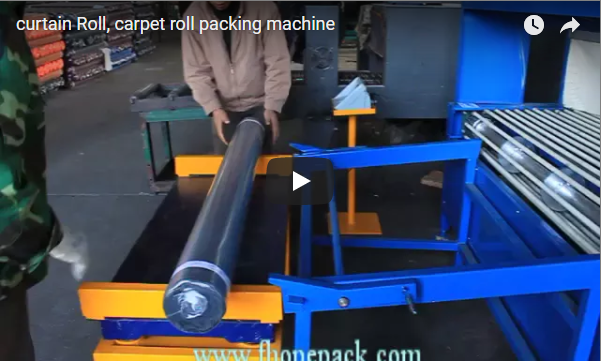Optimizing Media Packaging: A Deep Dive into the Automatic Disc Shrink Wrap Machine
In the demanding world of media production and distribution, efficient and reliable packaging is paramount. The automatic disc shrink wrap machine represents a critical automation solution, designed to securely enclose optical media like CDs, DVDs, and Blu-ray discs in protective shrink film. This process not only safeguards the product during transit and handling but also provides a professional, retail-ready finish. This article explores the technical specifications, design features, operational benefits, and user experience of a typical high-performance disc shrink wrapping system.
1. Core Functionality and Workflow
At its heart, this automated system streamlines the packaging process. Discs (often in jewel cases, slim cases, or paper sleeves) are fed into the machine via an integrated conveyor system. They then enter the wrapping station where a layer of shrink film (typically Polyolefin, PE, or PVC) is applied. The core of the process involves:
- Film Dispensing: A roll of center-folded shrink film is mounted, automatically feeding the correct amount for each package.
- Sealing: An L-Bar sealer (common in many designs) creates a complete bag around the disc by making transverse and longitudinal seals simultaneously, trimming excess film.
- Conveying: The loosely bagged disc is automatically transferred into the heat tunnel.
- Shrinking: Inside the insulated heat tunnel, precisely controlled hot air circulates, causing the film to shrink tightly and uniformly around the contours of the disc package.
- Cooling & Exit: Post-shrinkage, the package may pass through a brief cooling zone before exiting the machine, ready for boxing or further handling.
2. Design, Structure, and Key Components
Industrial shrink wrap machines are engineered for durability and sustained operation. Key structural and component highlights often include:
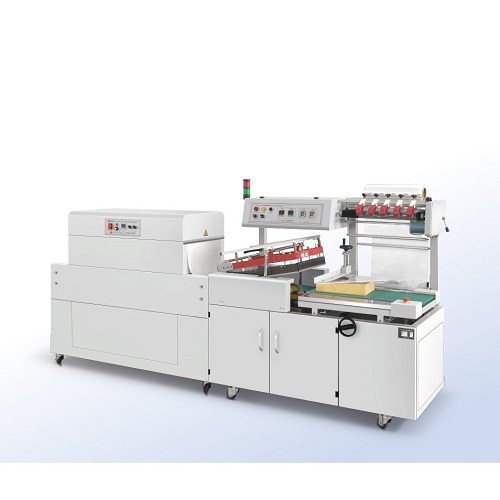
- Frame Construction: Typically built using robust powder-coated or stainless steel for stability and longevity in industrial environments.
- Conveyor System: Utilizes durable belts or rollers designed for smooth product transfer. Variable speed controls allow synchronization with production line speeds.
- Sealing System: Features like hot knife sealing jaws with PTFE coating prevent film buildup and ensure consistent, strong seals. Precise temperature and pressure controls are crucial.
- Heat Tunnel: High-efficiency design with controlled airflow and adjustable temperature settings (often up to 200-300°C) ensures uniform shrinkage without damaging the product. Proper insulation minimizes energy loss.
- Control Panel: Usually incorporates a Programmable Logic Controller (PLC) and a user-friendly Human-Machine Interface (HMI) touchscreen. This allows for easy setup, adjustment of parameters (speed, temperature, timing), diagnostic feedback, and storage of product recipes.
- Film Handling: Includes powered film unwind, perforation rollers (for air evacuation during shrinking), and automatic scrap film wind-up systems.
3. Technical Specifications Overview
While specific parameters can vary significantly based on the model and configuration, the following table outlines typical specifications for a high-output automatic disc shrink wrap machine:
| Parameter | Typical Specification | Notes |
|---|---|---|
| Machine Type | Fully Automatic L-Bar Sealer & Shrink Tunnel | Continuous motion or side-seal variants also exist. |
| Production Speed | Up to 60-150+ discs per minute | Dependent on disc size, film type, and integration. |
| Compatible Disc Sizes | Standard 120mm discs (in cases/sleeves) | Adjustable guides accommodate variations (e.g., mini-discs). |
| Max Package Dimensions | Check specific model (L x W x H limits) | Critical for handling different case types. |
| Film Type Compatibility | Polyolefin (POF), Polyethylene (PE), PVC | POF is often preferred for clarity and strength. |
| Film Roll Width | Up to ~400-600 mm | Machine specific. |
| Film Thickness | 12 - 25 microns (approx. 50 - 100 gauge) | Thicker films offer more protection but require more heat. |
| Sealing System | Hot Knife L-Bar with PTFE coating | Ensures clean seals. |
| Tunnel Temperature | Ambient to ~300°C (Adjustable) | Precise control needed for different films. |
| Power Requirements | 220V/380V, 50/60Hz, 3-Phase (typical) | Check specific machine requirements (kW rating). |
| Control System | PLC with Touchscreen HMI | Allows parameter adjustment and diagnostics. |
| Machine Dimensions (LWH) | Approx. 3000-5000mm x 800-1000mm x 1500-1800mm | Footprint varies by model and features. |
| Machine Weight | Approx. 500 - 800 kg | Indicates robust construction. |
Disclaimer: The parameters listed above are representative. Exact specifications depend on the specific machine model and configuration. Please contact us for precise data relevant to the equipment shown or your application.
4. Operational Efficiency and User Experience
From an operational standpoint, these machines offer significant advantages:
- Automation: Reduces manual labor requirements and associated costs, freeing up personnel for other tasks.
- Consistency: Delivers uniform package quality and appearance, enhancing brand perception.
- Speed: High throughput rates meet the demands of large-scale production runs.
- Ease of Use: Modern HMI interfaces simplify setup, operation, and troubleshooting. Features like easy film threading and automatic scrap removal minimize downtime.
- Safety: Equipped with safety interlocks, emergency stops, and guarded mechanisms to protect operators. Heat tunnels are insulated to prevent burns.
- Maintenance: Designed with accessibility in mind for routine cleaning and maintenance (e.g., replacing sealing wires/blades, checking sensors).
Personal experience often highlights the reliability gained from consistent sealing and shrinking, a marked improvement over manual or semi-automatic methods, especially regarding package integrity and aesthetic appeal. Quick changeovers between different product sizes (if needed) are also a key consideration evaluated during operation.
5. Industry Applications
The utility of automatic disc shrink wrappers spans several sectors:
- Software and Game Publishing: Essential for packaging large volumes of software installers, video games, and applications distributed on physical media. Ensures tamper evidence and professional presentation.
- Music and Film Industry: Streamlines the packaging of CDs, DVDs, and Blu-rays for retail distribution, maintaining product quality from duplication plant to consumer.
- Educational and Training Materials: Efficiently packages educational content distributed on discs by institutions and corporate training departments, ensuring durability and longevity.
- Corporate Communications: Used for professionally packaging promotional discs, annual reports, or informational materials distributed at events or through direct mail, reinforcing brand image.
6. Conclusion
The automatic disc shrink wrap machine is a cornerstone technology for industries relying on physical media distribution. Its combination of speed, efficiency, reliability, and consistent package quality makes it an indispensable asset for optimizing packaging lines. By automating the shrink-wrapping process, businesses can significantly reduce labor costs, enhance product protection, improve presentation, and meet high-volume production demands effectively. Investing in such equipment translates to improved operational efficiency and a stronger bottom line in competitive markets.
For more information on specific models and configurations tailored to your needs, visit:
www.fhopepack.com

